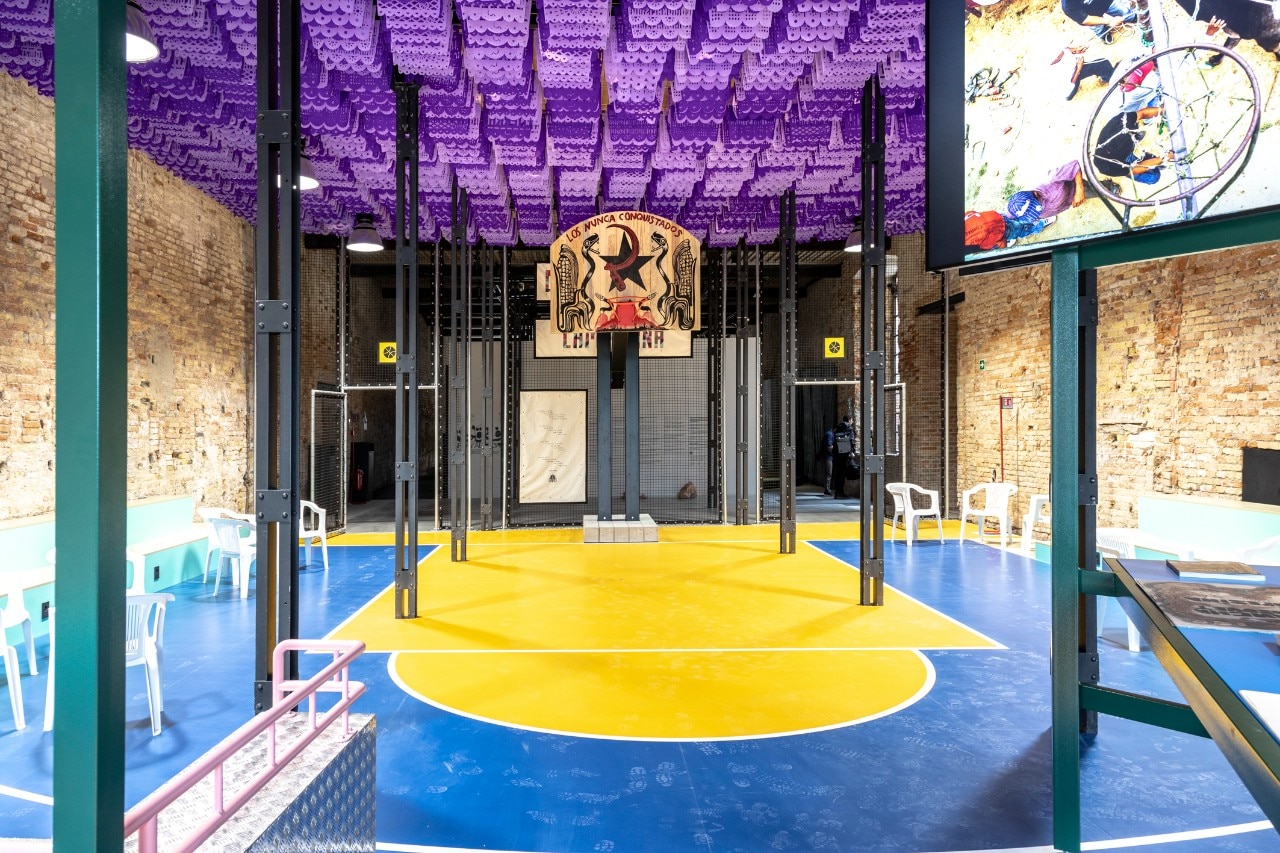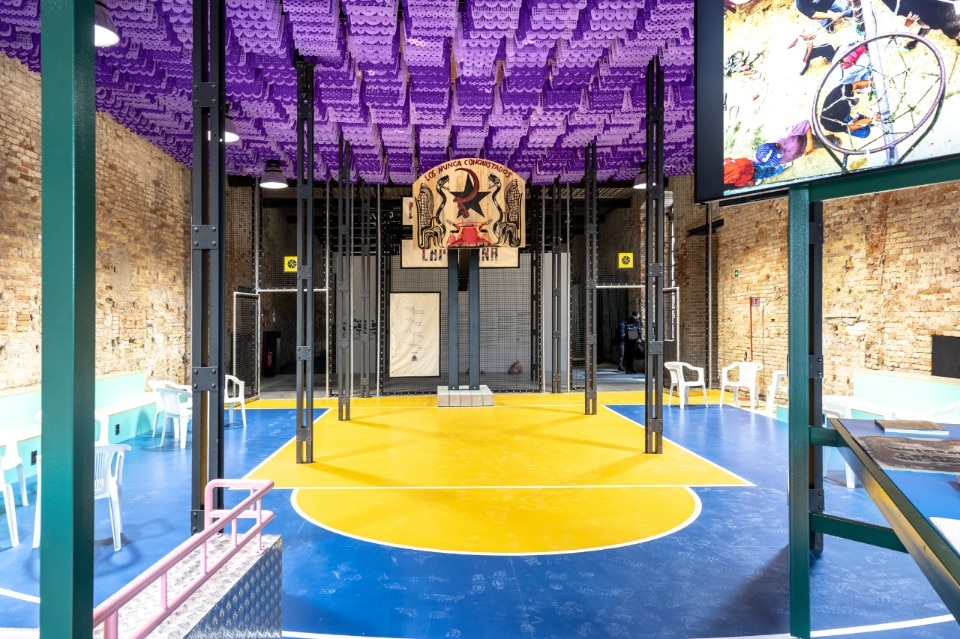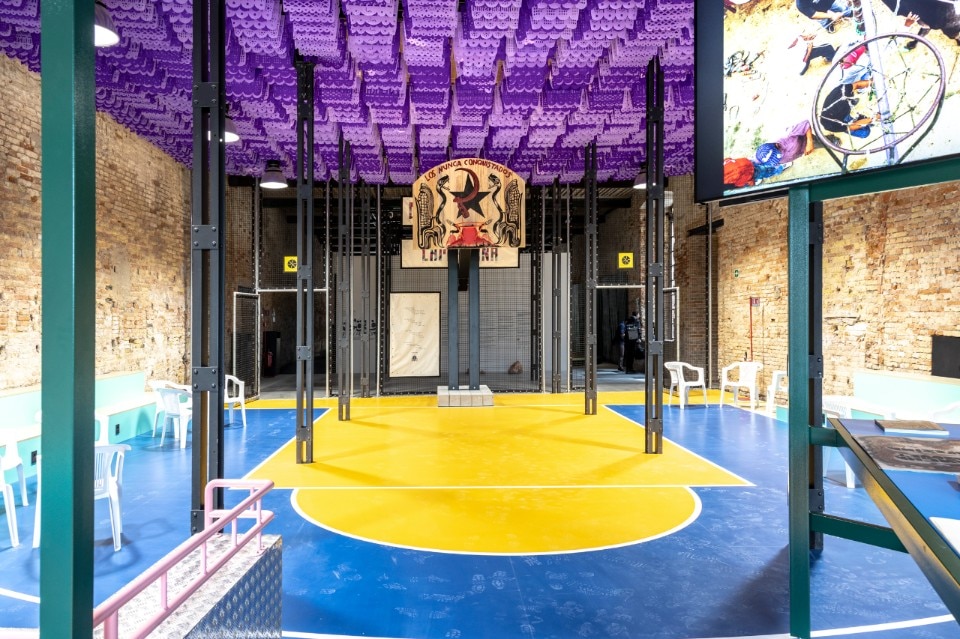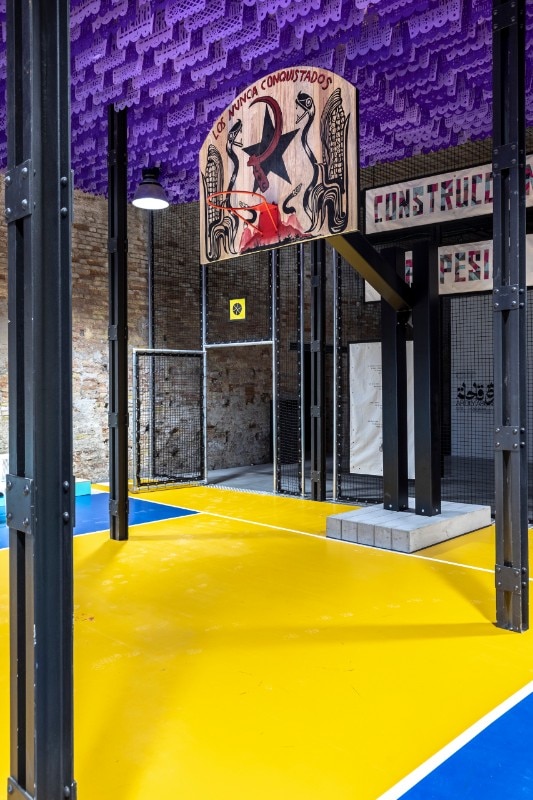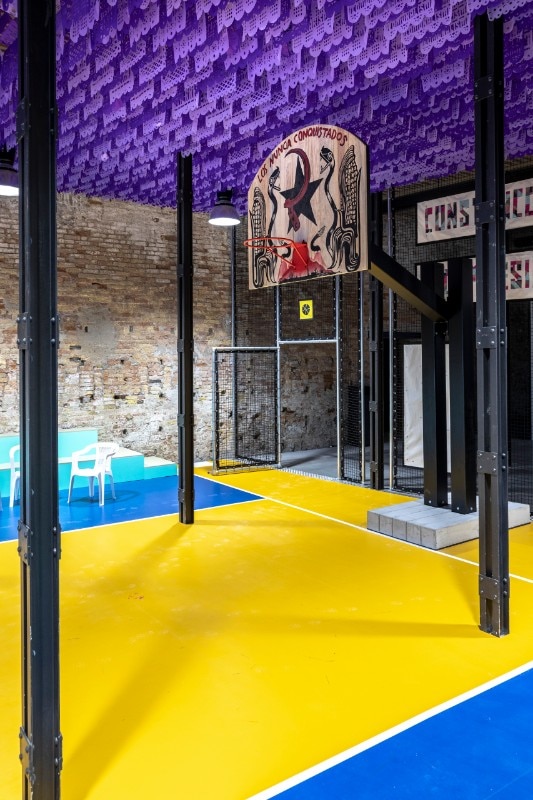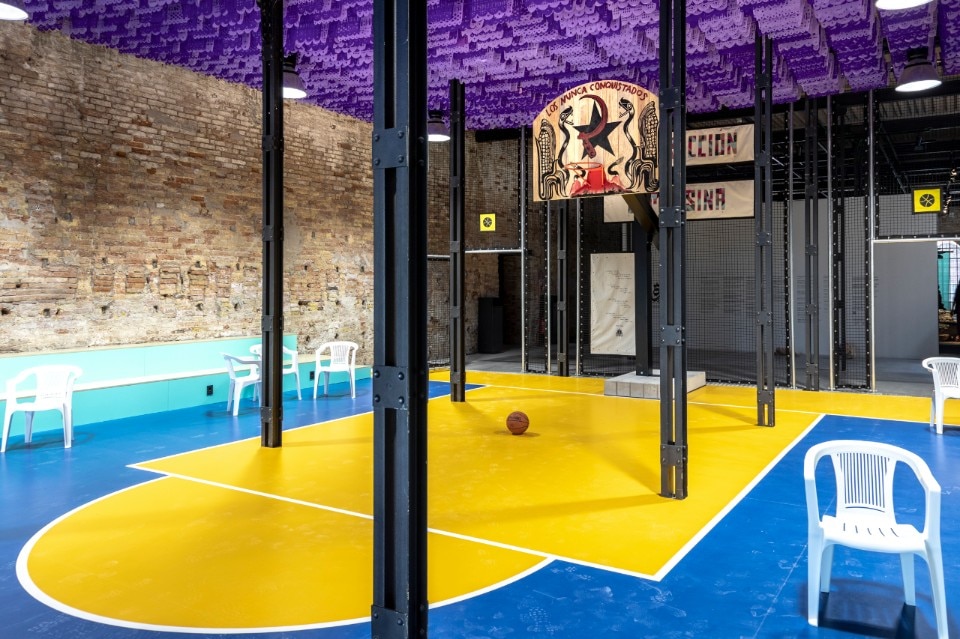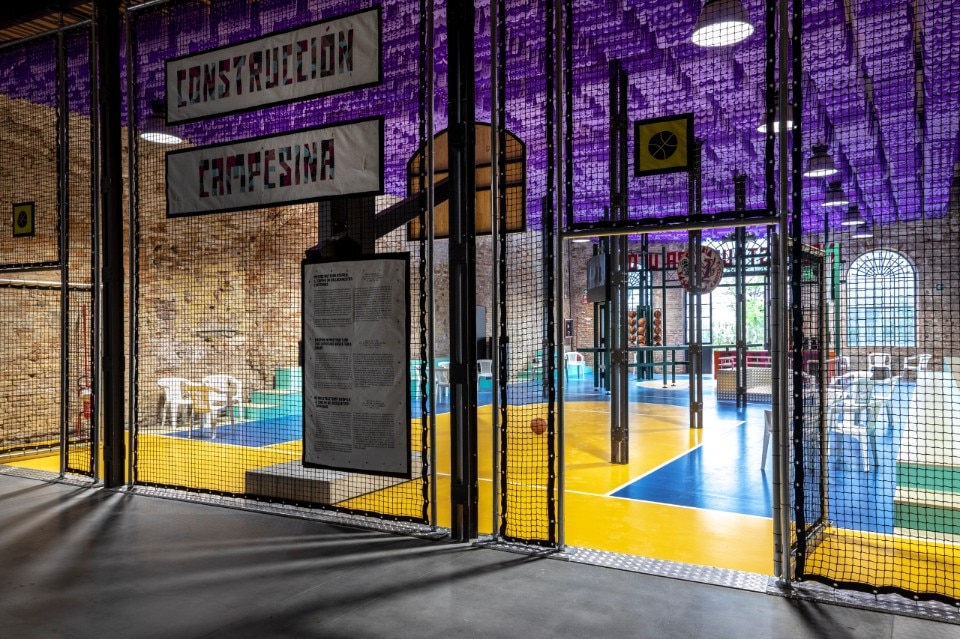A fragment of a concrete basketball court, painted yellow and blue, with basketball hoop, backboard and side seating, inside the Arsenale’s Hall of Arms. This is the Mexican Pavilion at the 18th. International Architecture Exhibition – La Biennale di Venezia: an immediately clear installation that does not imply any intellectualistic afterthought but which, behind its disarming simplicity, turns the international spotlight on a part of Mexico’s social history not devoid of conflict but with a confident look to the future.
The basketball court is approached as the smallest unit of rural social infrastructure in Mexico. Basketball became popular in the country in the 1920s; in 1940, the government promoted the construction of these sports facilities as part of the agrarian reform for the provinces, as a manifesto of a policy that aimed to create flexible public works in rural territories undergoing transformation, in the general process of decolonisation and modernisation of the country. Festivals, markets, debates, assemblies, temporary medical services, as well as basketball games, took place on these small concrete rectangles, intended as an aggregative cell of social life.
The exhibition curated by Aprdelesp studio and sociologist Mariana Botey starts out from a reflection on the problems of the Mexican countryside to open up to a broader investigation: how certain places can transcend their original function to become focal points in community building processes.
In accordance with the Biennial’s theme (“The Laboratory of the Future”), the basketball court is a temporary social laboratory where art, architecture and the community meet and on whose stage variegated expressive forms converge, in a spirit of multidisciplinary contamination: audio-visual installations, photographic and documentary material, radio broadcasts from Venice and Mexico City, a “decolonial jukebox” with archive material, music from different communities and popular songs animate a space in continuous performance, where the playful aspects are innervated with political-ideological insights.
A stimulating topic that, starting from decolonised Mexico and its specific problems, could easily be extended to a more general sphere, in an increasingly global world where borders and local identities are blurred, and with them the sense of belonging to a community.
The pavilion will be open to the public until 26 November.
- Project:
- Utopian Infrastructure: The Campesino Basketball Court, Mexico Pavilion, 18th International Architecture Exhibition – La Biennale di Venezia
- Curators:
- APRDELESP, Mariana Botey
- Commissioner:
- Diego E. Sapién Muñoz, Instituto Nacional de Bellas Artes y Literatura


